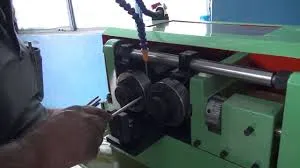
-
 Afrikaans
Afrikaans -
 Albanian
Albanian -
 Amharic
Amharic -
 Arabic
Arabic -
 Armenian
Armenian -
 Azerbaijani
Azerbaijani -
 Basque
Basque -
 Belarusian
Belarusian -
 Bengali
Bengali -
 Bosnian
Bosnian -
 Bulgarian
Bulgarian -
 Catalan
Catalan -
 Cebuano
Cebuano -
 Corsican
Corsican -
 Croatian
Croatian -
 Czech
Czech -
 Danish
Danish -
 Dutch
Dutch -
 English
English -
 Esperanto
Esperanto -
 Estonian
Estonian -
 Finnish
Finnish -
 French
French -
 Frisian
Frisian -
 Galician
Galician -
 Georgian
Georgian -
 German
German -
 Greek
Greek -
 Gujarati
Gujarati -
 Haitian Creole
Haitian Creole -
 hausa
hausa -
 hawaiian
hawaiian -
 Hebrew
Hebrew -
 Hindi
Hindi -
 Miao
Miao -
 Hungarian
Hungarian -
 Icelandic
Icelandic -
 igbo
igbo -
 Indonesian
Indonesian -
 irish
irish -
 Italian
Italian -
 Japanese
Japanese -
 Javanese
Javanese -
 Kannada
Kannada -
 kazakh
kazakh -
 Khmer
Khmer -
 Rwandese
Rwandese -
 Korean
Korean -
 Kurdish
Kurdish -
 Kyrgyz
Kyrgyz -
 Lao
Lao -
 Latin
Latin -
 Latvian
Latvian -
 Lithuanian
Lithuanian -
 Luxembourgish
Luxembourgish -
 Macedonian
Macedonian -
 Malgashi
Malgashi -
 Malay
Malay -
 Malayalam
Malayalam -
 Maltese
Maltese -
 Maori
Maori -
 Marathi
Marathi -
 Mongolian
Mongolian -
 Myanmar
Myanmar -
 Nepali
Nepali -
 Norwegian
Norwegian -
 Norwegian
Norwegian -
 Occitan
Occitan -
 Pashto
Pashto -
 Persian
Persian -
 Polish
Polish -
 Portuguese
Portuguese -
 Punjabi
Punjabi -
 Romanian
Romanian -
 Russian
Russian -
 Samoan
Samoan -
 Scottish Gaelic
Scottish Gaelic -
 Serbian
Serbian -
 Sesotho
Sesotho -
 Shona
Shona -
 Sindhi
Sindhi -
 Sinhala
Sinhala -
 Slovak
Slovak -
 Slovenian
Slovenian -
 Somali
Somali -
 Spanish
Spanish -
 Sundanese
Sundanese -
 Swahili
Swahili -
 Swedish
Swedish -
 Tagalog
Tagalog -
 Tajik
Tajik -
 Tamil
Tamil -
 Tatar
Tatar -
 Telugu
Telugu -
 Thai
Thai -
 Turkish
Turkish -
 Turkmen
Turkmen -
 Ukrainian
Ukrainian -
 Urdu
Urdu -
 Uighur
Uighur -
 Uzbek
Uzbek -
 Vietnamese
Vietnamese -
 Welsh
Welsh -
 Bantu
Bantu -
 Yiddish
Yiddish -
 Yoruba
Yoruba -
 Zulu
Zulu
Mini Thread Rolling Machine Price List and Buying Guide
Understanding the Pricing of Mini Thread Rolling Machines
In the world of manufacturing, the precision of components is often dictated by the quality of the machinery used. One such machine that plays a significant role in the production process is the mini thread rolling machine. These machines are designed to create high-quality, precise threads on metal parts, which are essential for a variety of applications ranging from automotive to aerospace industries. As the demand for these machines continues to grow, understanding their pricing dynamics becomes crucial for manufacturers and procurement managers alike.
Mini thread rolling machines are generally favored for their compact size and efficiency. Unlike traditional thread cutting machines, which can be bulky and energy-consuming, mini machines provide a cost-effective and space-saving solution without compromising quality. The pricing of these machines can vary significantly based on multiple factors such as brand reputation, machine features, manufacturing materials, and geographical location.
When it comes to the base price, a typical mini thread rolling machine can range from approximately $3,000 to $10,000. Entry-level models are often available at the lower end of this range, offering basic functionalities suitable for small-scale operations or less demanding applications. However, mid-range models that incorporate advanced features such as automatic feeding systems, programmable controls, and higher durability are priced higher, reflecting their enhanced capabilities and longer lifespan.
Understanding the Pricing of Mini Thread Rolling Machines
Furthermore, the inclusion of features such as programmable controls, real-time monitoring systems, and support for various thread forms can also drive up the cost. Systems that offer greater versatility—capable of handling different diameters and pitches—are particularly attractive to manufacturers looking to diversify their product lines.
mini thread rolling machine pricelist

Another consideration that impacts pricing is the manufacturer’s geographical location. Machines produced in countries with higher labor costs, such as Germany or the United States, may be more expensive than those from countries with lower production costs, like China or India. However, this does not automatically translate into inferior quality. Many manufacturers have established reputations for producing high-quality machines at competitive prices despite lower labor costs.
Potential buyers should also factor in the total cost of ownership (TCO) when evaluating prices. This includes not just the initial purchase price, but also operating costs, maintenance expenses, and training programs for staff. A machine that appears to be a bargain upfront may end up costing more in the long run if it requires frequent repairs or has higher operational inefficiencies.
In addition to the purchase price, companies looking to invest in mini thread rolling machines often consider the availability of customer support and warranty offerings from the manufacturer. A robust warranty can provide peace of mind and reflect the manufacturer's confidence in their product. Similarly, comprehensive customer support, including training and troubleshooting aids, can enhance the machine's operational effectiveness and longevity.
As the industry evolves, many manufacturers are focusing on integrating smarter technologies into their machines. This evolution towards automation and connectivity can also influence pricing. Although the initial investment in these advanced machines is often higher, the long-term savings and increased productivity can justify the price tag.
In conclusion, when exploring the mini thread rolling machine market, it’s essential to consider the various factors that influence pricing. From the machine's features and quality of construction to manufacturer location and support services, each aspect plays a critical role in determining overall value. As the manufacturing landscape continues to grow, investing in the right equipment will be crucial for companies aiming to maintain competitiveness and enable product innovation. Careful evaluation and strategic purchasing decisions can lead to significant long-term benefits for manufacturers, ensuring that they are well-equipped to meet the demands of tomorrow.
